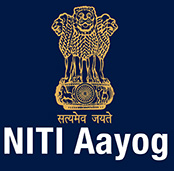Digital Arrest: The Modern-Day Cyber Scam by Major Sadhna Singh, Consultant, NITI Aayog
Digital Arrest: The Modern-Day Cyber Scam
In the early days of the internet, cybercriminals were limited to defacing websites and pulling harmless pranks. Fast forward to today, and cybercrime has evolved into a sophisticated, ever-changing industry, with fraudsters constantly adapting to new technologies and targeting millions of unsuspecting victims.
The year 2024 witnessed a surge in cyber scams, particularly those involving digital arrest schemes. These scams have now expanded beyond basic online fraud, resembling large-scale operations akin to the infamous "Jamtara" scams. The targets of these frauds have become increasingly diverse, including high ranking officials, journalists, security personnel, and even innocent elderly individuals. Cybercrime has gone from a distant threat to a pervasive, everyday reality.
What is Digital Arrest?
Digital arrest is a scam designed to extort money from victims using fear, deceit, and intimidation. Fraudsters impersonate law enforcement officials, using threats of arrest, frozen bank accounts, and passport cancellations to coerce victims into paying a "fine" or "security deposit" to avoid legal action.
The scam typically begins with a phone call - seemingly innocent at first, offering everything from a harmless parcel delivery claim to a demand for KYC verification. As the conversation progresses, the scammer uses increasingly aggressive tactics to instill panic, often claiming that the victim is involved in serious crimes like money laundering, cybercrime, or drug trafficking. With fake documents, doctored videos, and even spoofed phone numbers, the scammers create an air of legitimacy, pushing the victim to comply with their demands.
Why Does it Happen?
From phishing emails to financial fraud and ransomware attacks, cybercriminals use various tactics to steal data and money. But why do these scams keep happening? What makes them so effective? Let’s explore the key reasons behind cyber scams and how we can protect ourselves from falling victim.
- Human Psychology & Social Engineering: One of the biggest reasons cyber scams succeed is human error. Cybercriminals use social engineering tactics to manipulate people into revealing sensitive information. Many people are unaware of common scam techniques, making them easy targets. Fraudsters also exploit emotions like fear (threatening legal action), excitement (fake lottery wins), or urgency (fake emergency fund requests). Cybercriminals often impersonate trusted sources such as banks, government agencies, or even close friends.
- Weak Cybersecurity Practices: Cybercriminals often exploit poor security habits, making it easier for them to access personal or financial data. Common weaknesses include weak password and credentials use, unpatched software and system and poor security hygiene.
- Rapidly Evolving Cybercrime Techniques: Cybercriminals constantly evolve their methods to stay ahead of security measures.
- Digital Payments & Financial Fraud Risks: With the rise of digital transactions, cybercriminals have developed sophisticated methods to exploit online payment systems like fake UPI requests & QR codes, card skimming & SIM swaps and crypto & investment scams.
- Dark Web & Cybercrime Networks: The dark web serves as a marketplace for stolen data, malware tools, and illegal activities. Cybercrime has become an organized industry where criminals buy and sell stolen data and identity theft, organised cyber-crime syndicates and also offer Ransomware-as-a-Service (RaaS) as well.
- Lack of Strong Cyber Laws & Enforcement: Despite increasing cyber threats, many scams go unpunished due to slow law enforcements response, cross border crime challenges and lack of cyber crime awareness and policies.
Common Modus Operandi of Scammers
- Initial Contact: Scammers pose as law enforcement or government officials (CBI, ED, Customs, Interpol, etc.) via phone calls, emails, WhatsApp messages, or fake official letters.
- Creating Panic: The victim is falsely accused of crimes like money laundering or cybercrime and threatened with immediate arrest if they don't act quickly.
- Digital Verification: To add credibility, scammers send fake documents, fake videos, or doctored arrest warrants, making the claim appear real.
- Coercion: Victims are threatened with arrest, freezing of bank accounts, or passport cancellation. They are instructed not to involve family or lawyers, and are asked to pay a "security deposit" or "fine."
- Payment Methods: Payments are demanded via digital transactions like UPI, cryptocurrency, or prepaid gift cards, and sometimes even remote surveillance of banking details.
- Disappearance: Once the victim transfers the money, the scammers vanish, leaving the victim realizing they've been deceived only after trying to verify the situation with actual authorities.
- Money Laundering: The extorted funds are often divided into smaller amounts, funneled through multiple accounts, and eventually transferred to offshore accounts for illicit use.
India's Fight Against Cyber Crime and Digital Arrest
In response to the growing menace of cybercrime, the Indian government has ramped up efforts to combat digital fraud. Key initiatives include:
- Indian Cyber Crime Coordination Centre (I4C): Established by the Ministry of Home Affairs, this center coordinates national efforts to combat cybercrime and provide cybercrime prevention resources.
- National Cyber Crime Reporting Portal: A dedicated portal allows the public to report cybercrimes, with a focus on cases involving women and children, enabling swift action by law enforcement.
- Financial Cyber Fraud Reporting System: Launched in 2021, this platform has successfully saved over ₹3431 Crore across 9.94 lakh complaints by allowing immediate reporting of financial frauds.
- Cyber Forensic Labs: The National Cyber Forensic Laboratory in Delhi and the Evidence Lab in Hyderabad have significantly improved the ability of police to manage and analyze digital evidence.
- Training through CyTrain: I4C's online platform trains law enforcement and judicial officers on investigating and prosecuting cybercrime, with over 98,000 police officers trained so far.
- Public Awareness Campaigns: The government has implemented awareness campaigns through SMS, social media, Cyber Dost, SancharSathi portal and app, and even digital displays in public spaces like metro stations and airports, promoting cyber safety and security.
These initiatives have strengthened the national framework against cybercrime, making India a safer place in the digital realm.
Our Role in the Fight Against Digital Arrest
While the government and law enforcement agencies are doing their part, the fight against digital arrest fraud also lies in the hands of every citizen. Awareness and education are the first lines of defence, especially for the most vulnerable populations-youth, the elderly, and those in rural areas-who are often targeted by these scams.
Open discussions about how digital fraud operates can help demystify these schemes and arm individuals with the knowledge they need to protect themselves. Instead of stigmatizing victims, we must create an environment of support, where victims feel safe to report incidents without fear of judgment. This shift in perspective is critical to breaking the silence that often allows cyber criminals to flourish unchecked.
Empowerment through Awareness
Cyber scams and digital arrest frauds can strike anyone, regardless of age, background, or profession. The rise of these scams in India is driven in part by society's tendency to shame victims, making it harder for them to come forward. Fear of social stigma and reputational harm keeps many from reporting these crimes, enabling scammers to continue their operations unhindered.
It's time to change this narrative. We must replace shame with support, encouraging victims to speak out and seek justice. By fostering a culture of open discussion, we can make it more difficult for scammers to thrive. Awareness, education, and collaboration between authorities and citizens will be pivotal in preventing further harm and creating a safer digital environment for all.
Together, we can empower victims, expose scammers, and build a digital world where cyber fraud no longer holds sway. Let's break the silence, turn the tide against digital fraud, and ensure that justice prevails in the fight against cybercrime.
 National Portal Of India
National Portal Of India 







